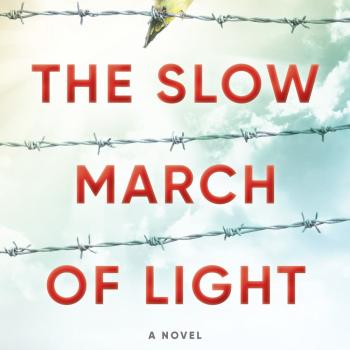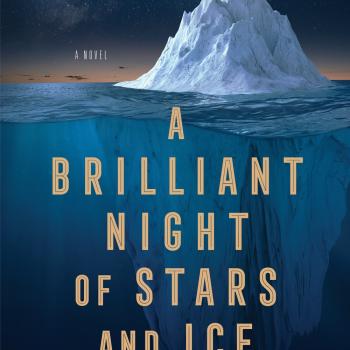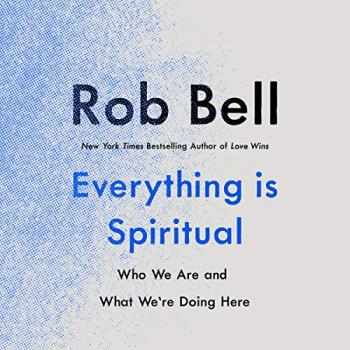 [This post is part of a roundtable discussion on the new book Being Different: An Indian Challenge to Western Universalism by Rajiv Malhotra, now featured at the Patheos Book Club.]
[This post is part of a roundtable discussion on the new book Being Different: An Indian Challenge to Western Universalism by Rajiv Malhotra, now featured at the Patheos Book Club.]
Readers are invited to take off their own “westernized” spectacles to get a glimpse of the neglected or misrepresented aspects of Dharmic thought such as embodied knowing, integral unity, comfort with chaos, and the cultural context of Sanskrit. All of these, claims Malhotra, could helpfully challenge (and perhaps reformulate) the unquestioned foundations of Western philosophy, politics, and culture.
As a scholar of Jainism—one of the four Dharma traditions—I couldn’t be happier to have another voice emphasizing the instructive precepts of Indic philosophy, among them the authority of individual experience over doctrines (56), the body as an instrument of knowledge (77), the anticipation of ongoing change in the world, and the interconnected unity among all life forms (105). Malhotra also provides a needed service by pointing out how Sanskrit terms like avatar, Brahman, and Vedas do not have accurate English equivalents and are thus often misused (Chapter 5). He reminds us that yoga, karma, and guru functioned as parts of a sophisticated, naturalized worldview long before they became pop culture slang.
As a scholar of Whiteheadian process philosophy (with its geographical, if not its theoretical, roots in the West), however, I found Malhotra’s critique of Western Universalism too universal. In his quest to divide the world into the binary of East and West, Malhotra seems to gloss over the unique contributions made by “Western” thinkers and artists. Many of these individuals have spent their lives challenging limitations and incorrect assumptions of Western theology and philosophy, and their work echoes perspectives on par with, or even influenced by, the best of Dharmic wisdom.
He dismisses post-colonial and postmodern authors as secular nihilists (331) or “useful pets” (332) to Western academic institutions. Those scholars of “Whiteheadian thought” are accused of “repackaging their historical dogmas in science-compliant ways” (144). In simplifying these rich and varied coalitions of thought, Malhotra misses an opportunity for collaboration, for philosophical cross-fertilization, and for partnership in common causes. He also fails to exercise the Indian logic of relativity he advocates that would show these thinkers to be hybrids, on the one hand shaped by Western influences, and on the other hand shaped by myriad other voices and concerns, some of which are still emerging. In concrete ways, many of these thinkers are purva paksha incarnate, living between nationalities, philosophical traditions, and epistemologies, trying to accept multiple tensions in order to address the most pressing problems of a globalizing world.
Further, he makes little mention of places in Indian thought that remain limited or exclusionary, permitting untoward behavior as “only a lack of knowledge,” or downplaying punishments for social nonconformity as “local and limited” (135). Though he points out the importance of the female energy in Indic philosophy (99), he is silent on the dearth of female Indian voices in Dharmic literature and scholarship, either currently or historically. His claim that “there is no gay taboo in dharma,” may be argued in theory, but ignores the many queer voices in Indian culture who claim otherwise (99).
These harsh polarities between the best of Indian philosophy and the totalizing limitations of the West brought to my mind excerpts from the New Atheist literature, in which all “religious” people are condemned as dangerous and irrational over and against the growing number of “reasonable” folk. Those few individuals or communities who, out of religious conviction, practice/d extraordinary acts of self-sacrifice, restraint, mutual aid, or costly resistance to the status quo are dismissed as anomalies. But this oppositional approach does not square with my understanding of Dharmic philosophy or practice. We don’t want to condemn the “Western” forest at the expense of the individual trees, especially since, as Malhotra rightly points out, Dharma asserts that truth exists in those trees, “resides as the indivisible Self within each person, animal, plant, and indeed each tiniest particle” (55).
As a scholar and activist, I have gravitated toward aspects of process thought, post-structuralism, Jain dharma, and feminism, specifically because each tradition asserts “irreducible difference” (29)—the refusal to reduce any life form down to universals—as the cornerstone for right perception and ethical action. Though its expression comes in different forms, I find comfort and inspiration that this shared insight is greater than cultural, political, and geographical boundaries. Those who share this commitment, wherever they make their embodied or intellectual home, reside on some common ground, and need not fear exploring their meaningful differences or participating in ongoing learning. But this shared commitment should not be downplayed either, as it provides a rare motivational engine for the collective reenchantment and revaluing—however transient and localized—of a dynamic world of living truths.
 Brianne Donaldson is the Coordinator for the Dharma Traditions at Claremont Lincoln University in Claremont, California. She is currently finishing her Ph.D. in Process Studies with a focus on Critical Animal Studies, Poststructural thought, and Jainism.
Brianne Donaldson is the Coordinator for the Dharma Traditions at Claremont Lincoln University in Claremont, California. She is currently finishing her Ph.D. in Process Studies with a focus on Critical Animal Studies, Poststructural thought, and Jainism.












